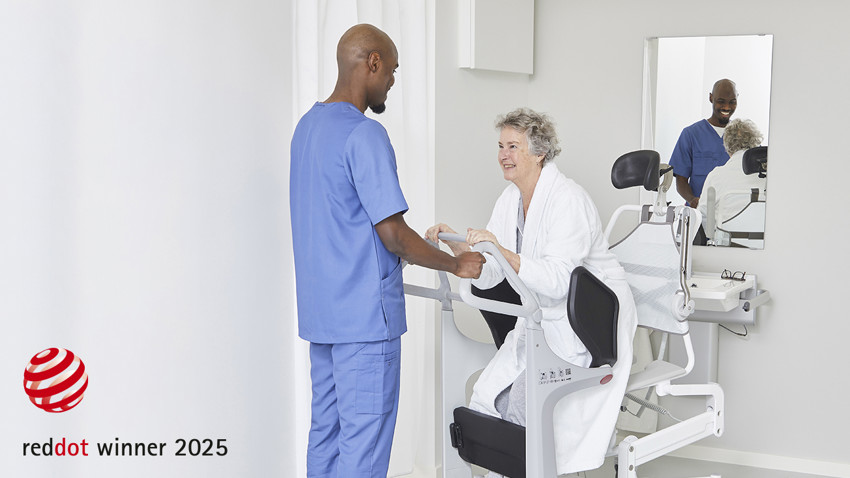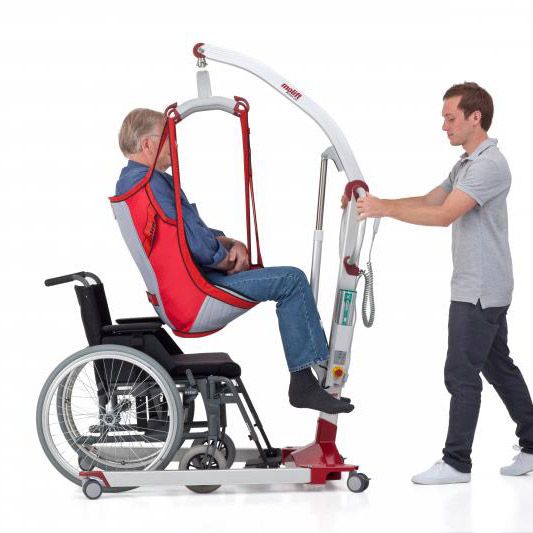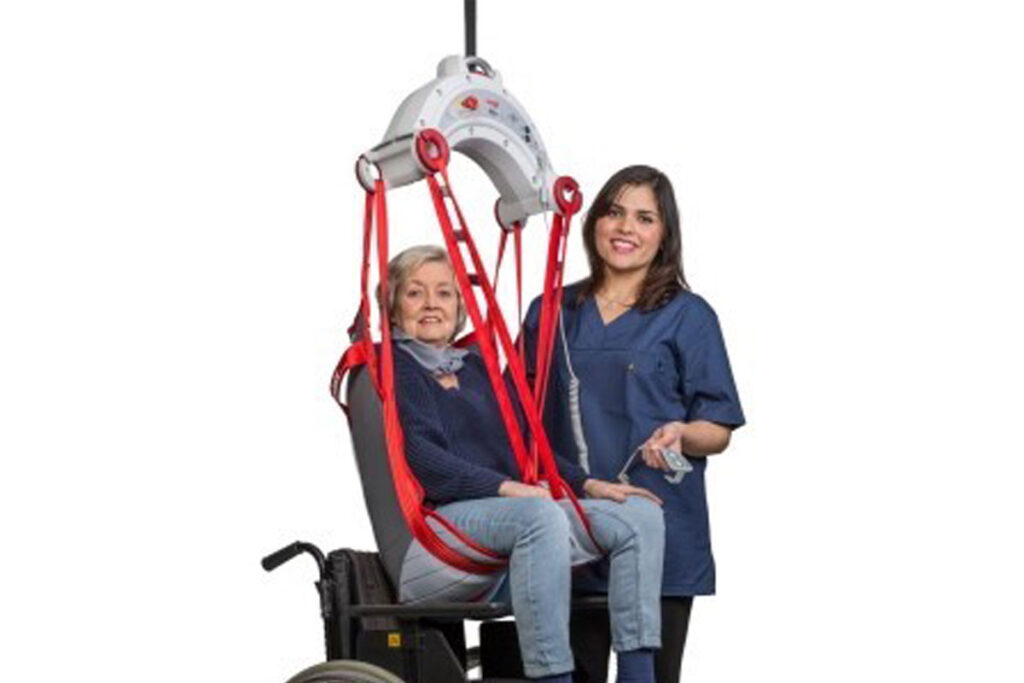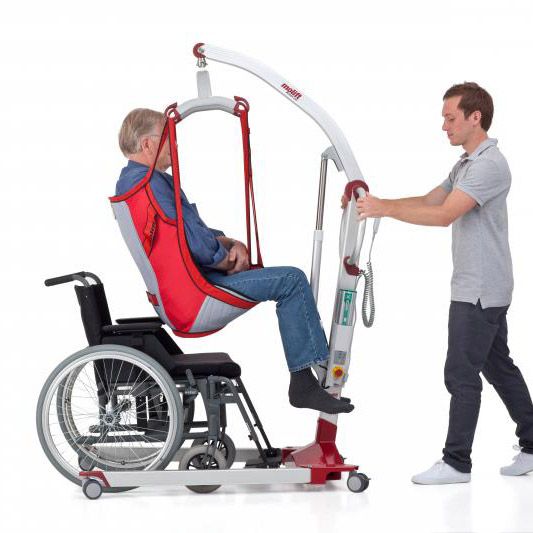
Patient handling and transfers represent some of the most physically demanding and potentially dangerous aspects of caregiving, whether in professional healthcare settings or home care environments. The combination of awkward positioning, heavy lifting, and time pressures creates significant injury risks for caregivers while potentially compromising the safety and dignity of care recipients. At LIFEmed, we understand that proper patient handling equipment isn’t just about convenience—it’s about preventing injuries, maintaining dignity, and ensuring that quality care can be provided safely and sustainably over time.
The statistics surrounding caregiver injuries are sobering, with back injuries, musculoskeletal disorders, and other physical injuries occurring at alarming rates among healthcare workers and family caregivers. These injuries not only impact the caregivers themselves but can also compromise the quality of care available to those who need it most. Understanding and implementing proper patient handling solutions creates safer environments for everyone involved while improving the overall care experience.
Modern patient handling technology has revolutionized the way we approach transfers and mobility assistance, offering sophisticated solutions that reduce physical strain while enhancing safety and dignity for care recipients. From simple transfer aids to complex mechanical lifting systems, today’s patient handling equipment addresses the full spectrum of mobility challenges encountered in healthcare and home care settings.
Understanding Patient Handling Challenges and Risks
Patient handling encompasses a wide range of activities, from simple position changes in bed to complex transfers between surfaces, mobility assistance, and emergency evacuations. Each of these activities presents unique challenges and risk factors that must be carefully managed to prevent injuries and ensure optimal outcomes.
The physical demands of patient handling often exceed the safe lifting capabilities of individual caregivers, particularly when dealing with patients who cannot assist with transfers or positioning. Traditional manual lifting techniques place enormous stress on caregivers’ backs, shoulders, and joints, leading to acute injuries and long-term musculoskeletal problems that can end careers and compromise quality of life.
Environmental factors further complicate patient handling challenges, as transfers often occur in confined spaces, around obstacles, or in emergency situations where optimal positioning and technique may not be possible. Wet surfaces, uneven floors, and limited maneuvering space add additional risk factors that must be addressed through proper equipment and techniques.
Patient factors such as weight, mobility level, cognitive status, and medical conditions create additional complexity in patient handling situations. Patients with limited mobility, confusion, or medical devices require specialized approaches and equipment to ensure safe, comfortable transfers that don’t compromise their medical status or dignity.
Categories of Patient Handling Equipment
Mechanical Lifting Systems
Floor lifts represent the gold standard for safe patient transfers in many situations, providing mechanical assistance that eliminates manual lifting while ensuring smooth, controlled movement. Modern floor lifts like the Mackworth M Series offer impressive weight capacities (350-400 pounds) with advanced features including Linak actuators and motors that provide reliable, precise operation.
These systems utilize specialized slings that distribute weight evenly and provide secure, comfortable support during transfers. The variety of available sling designs accommodates different transfer types, patient conditions, and positioning requirements, ensuring that mechanical lifting can be adapted to virtually any patient handling situation.
Ceiling-mounted track systems provide permanent lifting solutions for frequently used transfer routes, eliminating the need to position portable equipment while providing smooth, efficient transfers along predetermined paths. These systems are particularly valuable in bathrooms, bedrooms, and other areas where regular transfers occur.
The mechanical advantage provided by lifting systems dramatically reduces the physical demands on caregivers while often providing more comfortable, controlled transfers for patients compared to manual techniques. This improved experience benefits both parties and encourages proper transfer practices.
Transfer Aids and Mobility Assistance
Transfer boards, sliding sheets, and repositioning aids provide simple but effective solutions for reducing the physical demands of patient handling while maintaining safety and comfort. These devices work by reducing friction, providing stable surfaces, or offering mechanical advantages that make transfers easier and safer.
Sliding systems and lateral transfer devices help reduce the physical effort required for bed-to-bed transfers, repositioning, and other horizontal movements. These aids are particularly valuable for patients with limited mobility who cannot assist significantly with transfers but don’t require full mechanical lifting.
Gait belts, transfer belts, and mobility assistance devices provide secure grip points and support options for patients who retain some mobility but need assistance for balance, stability, or confidence during transfers and ambulation activities.
Standing and pivot transfer aids help patients who retain some weight-bearing ability participate in their transfers while providing security and assistance as needed. These devices often represent intermediate solutions between full independence and mechanical lifting requirements.
Accessibility and Vertical Lifting Solutions
Vertical platform lifts address architectural barriers that can make patient handling extremely difficult or impossible in multi-level environments. Serenity Health Care’s SH1 series vertical platform lifts offer multiple height options (28″, 52″, 72″, 105″, 144″) with flexible power options and configurations that accommodate various installation requirements.
These lifts provide safe, dignified access to different building levels for wheelchair users and individuals with mobility limitations, eliminating the need for dangerous manual carrying or impossible transfer situations. The Canadian-built Serenity lifts are specifically designed to withstand Canadian winters and environmental conditions, ensuring reliable year-round operation.
Stair lifts and inclined platform lifts offer solutions for individuals who can transfer to specialized seating but cannot navigate stairs independently. These systems provide safe, comfortable transportation on staircases while maintaining dignity and independence.
Porch lifts and entrance accessibility systems address the specific challenges of home accessibility, providing solutions for steps, raised entrances, and other architectural barriers that can prevent safe access to homes and buildings.
Professional Assessment and Equipment Selection
Proper patient handling equipment selection requires careful assessment of multiple factors including patient needs, caregiver capabilities, environmental constraints, and long-term care requirements. Understanding how to choose the right wheelchair dealer becomes important when selecting patient handling equipment, as experienced professionals can provide valuable guidance for equipment selection, installation, and training.
Healthcare professionals such as occupational therapists, physical therapists, and nurses can assess patient handling needs and recommend appropriate equipment based on medical conditions, functional capabilities, and care goals. Their expertise ensures that equipment selections address actual needs while considering safety, dignity, and long-term care requirements.
Environmental assessments consider space limitations, architectural features, electrical requirements, and accessibility needs that influence equipment selection and installation. These assessments help ensure that chosen equipment integrates effectively with existing environments while providing optimal functionality.
Caregiver assessment and training requirements must be considered when selecting patient handling equipment, as proper use techniques and safety procedures are essential for equipment effectiveness and user safety. Understanding how local dealers support wheelchair users with repairs and maintenance applies equally to patient handling equipment, as ongoing support and training are crucial for continued safe operation.
Safety Protocols and Best Practices
Implementing proper safety protocols is essential for effective patient handling programs, regardless of the equipment used. These protocols should address risk assessment, equipment inspection, proper use techniques, and emergency procedures that ensure optimal safety for all involved parties.
Regular equipment maintenance and inspection procedures help ensure continued safe operation of patient handling equipment. Mechanical systems require periodic servicing, while simpler aids need regular inspection for wear, damage, or deterioration that could compromise safety.
Training programs for caregivers should cover proper equipment use, body mechanics, communication techniques, and emergency procedures. Ongoing training helps ensure that safety practices remain current and effective as equipment and care needs evolve.
Documentation and incident reporting systems help identify patterns, equipment issues, or training needs that require attention. This systematic approach to safety management helps prevent recurring problems and continuously improves patient handling practices.




Funding and Financial Considerations
Patient handling equipment often qualifies for coverage under various funding programs, insurance plans, and accessibility grants. Understanding these funding sources can make essential equipment more accessible while reducing financial barriers to safe patient handling practices.
RAMP (Residential Access Modification Program) funding in Alberta provides grants for accessibility modifications including vertical platform lifts and other patient handling equipment for qualifying individuals. Finding a dealer experienced with funding programs can help navigate application processes and maximize available benefits.
Workers’ compensation programs often cover patient handling equipment in workplace settings, recognizing the injury prevention benefits and cost savings associated with proper equipment. Understanding these coverage options helps ensure that safety investments receive appropriate financial support.
Cost-benefit analysis of patient handling equipment should consider injury prevention, productivity improvements, care quality enhancements, and long-term healthcare cost savings. The investment in proper equipment often pays dividends through reduced injuries, improved care quality, and enhanced caregiver retention.
Home Care vs. Institutional Applications
Patient handling requirements differ significantly between home care and institutional settings, requiring different approaches to equipment selection, installation, and training. Home environments often present unique challenges including space limitations, electrical constraints, and limited caregiver resources that influence equipment choices.
Family caregivers may require more extensive training and ongoing support compared to professional healthcare workers, as they often lack formal healthcare training and may be managing complex care situations with limited resources. Equipment selections for home care should prioritize ease of use, reliability, and comprehensive support.
Institutional settings allow for more comprehensive patient handling programs including ceiling-mounted systems, dedicated transfer equipment, and specialized training programs. These environments can support more complex equipment systems while providing economies of scale for training and maintenance.
The transition between institutional and home care settings requires careful coordination to ensure continuity of safe patient handling practices. Equipment compatibility, caregiver training, and ongoing support must be maintained across different care environments.
Technology Integration and Future Trends
Modern patient handling equipment increasingly incorporates advanced technologies including sensors, monitoring systems, and automated features that enhance safety while providing valuable data for care optimization. These technological advances promise to further improve patient handling safety and effectiveness.
Smart lifting systems can monitor usage patterns, detect potential safety issues, and provide alerts when maintenance or adjustments are needed. This proactive approach to equipment management helps prevent problems before they compromise safety or functionality.
Integration with electronic health records and care management systems allows patient handling activities to be documented and tracked, providing valuable data for care planning and quality improvement initiatives.
Ergonomic advances continue to improve the design and functionality of patient handling equipment, making devices easier to use while providing better outcomes for both caregivers and care recipients.
Training and Competency Development
Effective patient handling programs require comprehensive training that addresses both equipment operation and general safe handling principles. Training should be tailored to specific equipment, care environments, and caregiver skill levels to ensure optimal effectiveness.
Competency assessment and ongoing education help ensure that caregivers maintain current knowledge and skills as equipment and best practices evolve. Regular refresher training addresses skill degradation and introduces new techniques or equipment features.
Mentorship and peer support programs can enhance training effectiveness by providing ongoing guidance and support for caregivers as they develop patient handling skills and confidence.
Quality Assurance and Continuous Improvement
Patient handling programs benefit from systematic quality assurance processes that monitor outcomes, identify improvement opportunities, and ensure continued effectiveness. These processes should address both equipment performance and caregiver practices.
Regular outcome measurement helps demonstrate the effectiveness of patient handling investments while identifying areas for improvement or adjustment. Metrics might include injury rates, care quality indicators, and user satisfaction measures.
Feedback systems that capture input from caregivers and care recipients provide valuable insights for program improvement and equipment optimization. This collaborative approach helps ensure that patient handling solutions continue meeting evolving needs.
Patient handling and transfer solutions represent critical investments in safety, quality of care, and caregiver sustainability. The wide range of available equipment ensures that virtually any patient handling challenge can be addressed through appropriate technology and proper implementation.
At LIFEmed, we understand that patient handling safety extends beyond equipment to encompass training, support, and ongoing service that ensures optimal outcomes for everyone involved. Our partnerships with leading manufacturers like Serenity Health Care and Mackworth provide access to innovative, reliable equipment backed by comprehensive support networks.
Contact our mobility specialists to discuss your patient handling needs and explore how our expertise can help create safer, more effective care environments that protect caregivers while enhancing dignity and comfort for care recipients. Remember, investing in proper patient handling solutions isn’t just about preventing injuries—it’s about ensuring that quality care can be provided safely and sustainably for years to come.
To visit our Social Media, please click on Facebook and Instagram


